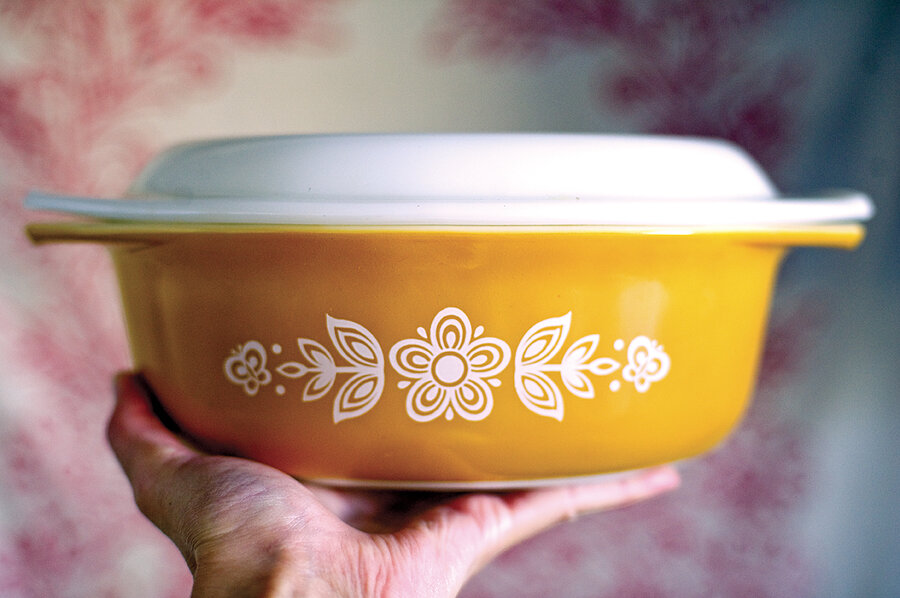Comfort ware
Loading...
A few months ago, a friend who lives two hours north of my farm posted on Facebook a photo of herself smiling at a cluster of cups, casserole dishes, and bowls. "I'm collecting Pyrex," Margo wrote. "Look at my newest discoveries."
"Pyrex?" I shook my head as I e-mailed her. "Why Pyrex?"
"Because it is inexpensive, and I can find it at yard sales and thrift shops."
"I still don't understand the attraction," I wrote back. But instead of an answer, I received another photo of a pink cup and word that Margo's 20-something daughter had joined the chase and started her own collection.
Margo had a point about the reasonable cost of the dishes. My china of choice has chubby bluebirds flying across apple blossoms, and it tends to be pricey.
As a newlywed I had unearthed my first piece while rummaging through my in-laws' barn. Probably in the 1940s, my husband's grandmother had left the bowl to be filled with fresh milk for the barn cats. I liked the pattern because it reminded me of my own grandmother's stories of watching bluebirds fly through their orchards. Within weeks, I spied bluebirds in my own apple orchard.
Early 20th-century families saw bluebird china, like Pyrex today, as everyday ware, and much of it perished. One antique dealer told me that her grandmother had been carrying a full dishpan of bluebird china when she stumbled. The dishes shattered.
Over the years, family and friends have gifted me enough pieces of bluebird china so that I can set a table – for two.
A week ago at a small potluck, Margo and her husband, Eric, arrived with a basket, and from it Margo withdrew two Pyrex casserole dishes that were gold with white flowers. I cornered her.
"OK, why the sudden interest in Pyrex dishes?" I asked.
"Because I loved an etched-glass casserole dish that my grandmother had, that she gave to my mother. I decided to search for one like it, and then kept finding other neat dishes."
Like my grandmother's bluebird tales, a familial memory had sparked a collection. I eyed her dishes sitting on the table, reminiscent of a church-supper lineup. Could Pyrex be like the "comfort food" – meatloaf and mashed potatoes – that stirs memories of home? Many of my generation grew up with ubiquitous glass bakeware filled with au gratin potatoes or lasagna, and we associate the dishes with joyful family gatherings.
At that moment, our host brought out a deep white bowl covered with red polka dots.
"Fire King!" Margo gasped, and examined the writing on the bottom of the bowl.
"You mean there are other brands of this stuff?" I asked.
Margo enlightened me with enough details about fireproof dishes that when I returned home that evening I checked my cupboards. On the bottom of a clear glass casserole dish that my mother had given me I saw the words Fire King.
I sent Margo a text message about my find, and how, as a child, I had kept my pet turtle in that dish.
"See, you too will become aware of vintage bakeware," she wrote back.
I still prefer bluebirds and apple blossoms, but because of Margo, I'll no longer judge Pyrex by its gold and avocado colors. Instead, I will value the humble dishes for how they spark memories of steamy kitchen windows and the fragrances of favorite foods shared during special times with family and friends.







